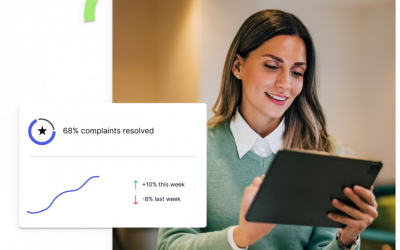Between ensuring greater efficiency, better cost management, and smart talent management, present-day organizations have to perform a fine balancing act. In such a scenario, workforce analytics can be invaluable in informing decisions. But developing and implementing metrics cannot occur in vacuum. A collaborative approach is critical to finalizing metrics that both the HR and top management can agree upon.
The metric selection process must be based on deep, personal insights
CFOs view the workforce in terms of cost while HR views it as an asset requiring investment. There is a need to get a better understanding of employee performance and costs to nurture and retain a talented workforce. By partnering with the CFO and managers across departments, HR can make final decisions on workforce metrics in a more flexible and informed way. Risk versus impact scenarios can be established more accurately. It also greatly lowers the likelihood of encountering obstacles as you move forward with implementation.
There is a critical need for workforce intelligence to help HR optimize their decisions. Data must be gathered and analyzed then transformed into information allowing HR to collaborate and socialize it across the enterprise to gain valuable input and insights from those who have a vested interest in the outcomes. Collaboration and social engagement accelerates the transformation of the information into the workforce intelligence resulting in shared benefits across the breadth of the organization.
You can look at it like this. When you buy a product on Amazon, you take some time out to read reviews to determine if the product is worth the money. Feedback and insights influence your decisions and point you in the right direction, at least 9 out of 10 times. It’s pretty much the same in an organizational environment. With a way to record information from other stakeholders who closely work with employee metrics and processes, you are better poised to have the intelligence you need to make good decisions.
Google’s ‘people analytics’ = $1 million in revenue per employee
Google, one of the world’s most valuable firms, is a pioneer of sorts when it comes to workforce analytics. The search engine and technology giant’s human capital management practices rely heavily on what it calls ‘people analytics’. It has benefited from its strategic focus on people by innovating like no other company. Google has a data-driven HR function, and uses an analytics-based model that has resulted in excellent workforce productivity results. On an average, each Google employee generates almost $1 million in revenue and $200,000 in profit each year. It’s much-talked-about workplace practices at Googleplex – ping pong, foosball, laundry facilities, on-site salon, subsidized massage program and 20% time, where employees can use a full day each week to work on a non-work project, have been designed based on people analytics.
Google’s people decisions are also based on workforce data and analytics. Importantly, they are driven by collaboration, with the company focusing on creating a collaborative workforce design that encourages management, employees and HR to learn from each other.
Collaborating on workforce analytics must be an integral part of business operations
Visibility into data in a format that makes interpretation easy for technical and non-technical users can drive decisions that take the organization forward. HR and management collaboration around information derived from workforce analytics empowers both employees and the organization.
A systematic process that brings together the opinions and knowledge of people about metrics and decisions can help in putting analytics to work successfully. Three ways in which an organization can drive the social engagement of their analytics efforts are:
- Using the right metrics that have a business and a people component. For instance, if by measuring the time needed to perform various tasks in a store and the actual productivity of each employee, business objectives of labor cost management and sales targets can be supported, then the metrics are valuable.
- Analytics must be leveraged for workforce optimization. Insights into efficient team members, inefficient sub-processes and factors affecting productivity can help organizations find an optimal balance between customer demand and labor costs.
- Data analytics must be used wisely to make a difference. By choosing a robust and easy-to-use workforce analytics platform, HR can collect the right data and share the information with managers. Proper training on using the analytics is imperative, and expectations from analytical reporting should be effectively communicated.
At the end of the day, metrics must measure business impact, be strategic, and be easily understood. Inputs not just from the HR and IT, but also managers from production, marketing and other functional departments can help identify metrics and inform the measurement plan of action. To ensure that decisions on metrics are in sync with various factors affecting the organization and its people, collaboration and social engagement is imperative. A systematic and inclusive approach can pave the way forward for success in any workforce analytics endeavor.




